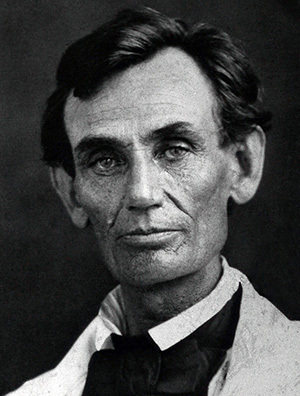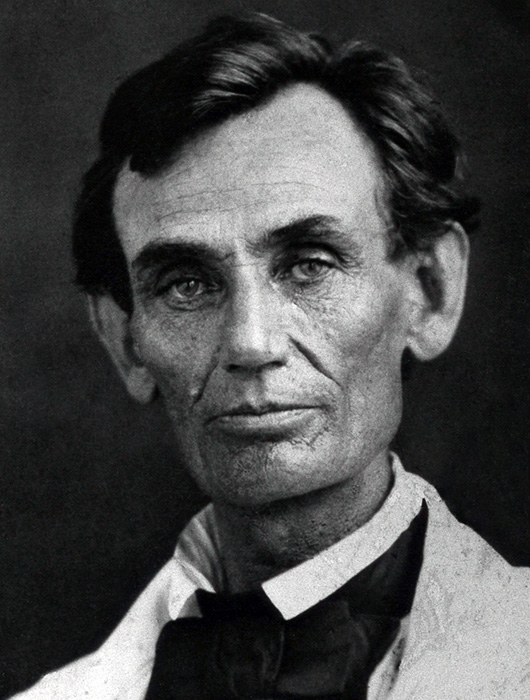
“Cool!” Tommy said as the boy checked out a 19th-century table in the cottage’s parlor. “Mom, do you think Abraham Lincoln sat at this table?”
Tommy’s class had been studying the 16th president in school, his mother explained, so she and her son spent their weekends visiting various Lincoln sites, including Bryant Cottage.
“I think it makes history more valuable to children when they can associate it with the places where history took place,” she said.
If former Illinois Gov. Rod Blagojevich had his way, Bryant Cottage wouldn’t have been a stop on the Altepeters’ Lincoln tour.
Five years ago, the home where Abraham Lincoln and Stephen Douglas are said to have planned their famous debates more than 150 years ago was one of 13 Illinois historic sites Blagojevich planned to close because of a $2 billion state budget shortfall.
State officials had scheduled the closure for Nov. 30, 2008. Bryant Cottage site manager Marilyn Ayers was making plans to shutter the building.
But following a groundswell of support for the Bement site – including letters of support from local government officials and Lincoln enthusiasts alike – state officials reversed the decision.
“Think about it. A major Lincoln and national event, the Lincoln-Douglas debates, had its humble origins in the middle of the Illinois prairie,” said Kent Tucker, a Lincoln memorabilia consultant from Rantoul.
Two sites – Bryant Cottage and the David Davis Mansion – were spared only after a group of area citizens vowed to provide extra volunteer labor, including giving school tours. “This is truly an example of grass-roots efforts making a difference,” Illinois State Preservation Agency spokesman Dave Blanchette said at the time.
Since then, more than 31,000 people have toured the historic cottage, according to Ayers. That includes tourists from about 30 states and various countries, she added.
“We get a lot of visitors from the UI who come out here while they visit Allerton Park,” she said. “And we get a lot of people who come here after visiting the Abraham Lincoln Presidential Library and Museum in Springfield. There’s a sign outside the museum about various historic sites and how to get here.”
As for Blagojevich? Five years after planning Bryant Cottage’s closure, he’s doing time in a federal prison in Colorado.
History lesson
Bryant Cottage was built in 1856 by Francis E. Bryant, a state legislator and Douglas’ friend and political ally.
When Lincoln challenged Douglas for the Senate two years later, the future president sometimes made appearances in the same places where Douglas spoke so that Lincoln could make his case.
On July 29, 1858, after delivering a speech at a rally in Monticello, Douglas was riding a horse-drawn carriage south on a country road headed toward Bement, where he planned to spend the night with the Bryant family. “As they began to leave, Douglas discovered handbills advertising that Lincoln was scheduled to speak in Monticello later that day,” Ayers said.
About 1 mile south of Monticello, Douglas’ carriage met another, headed northbound. It was carrying Lincoln, who was headed for Monticello to give his own speech.
“When Lincoln saw the carriage carrying Douglas, he motioned, and they pulled over to the side of the road,” Ayers said. “Lincoln hopped out to hand-deliver a letter that he brought, explaining all the reasons why they should have some debates.”
Douglas said he was headed for Bement and “told Lincoln when he was finished with his business in Monticello, he could return to Bement and find Douglas,” Ayers said. “Mr. Bryant is said to have told Lincoln that Douglas was a guest at his house, and the two of them were welcome to meet there.”
So, after Lincoln gave his speech in Monticello, he headed to Bryant Cottage. Sitting together in the parlor of the one-story, four-room wood-frame cottage, Douglas and Lincoln worked out the details of their seven debates.
When they finished, Douglas spent the night at the cottage, while Lincoln took a train back to Springfield.
From the heart
The descendants of the Bryants left the cottage to the village of Bement in the early 1900s, Ayers said. The village was responsible for the day-to-day maintenance and upkeep of the cottage. Then, in 1947, Bryant Cottage became a state historic site. It remains one, Ayers said, thanks to residents and area history buffs who let the former governor hear their sentiments following his 2008 announcement. “It was truly an action of respect and love and devotion,” she said.
Today Bryant Cottage hosts a variety of historical and community special events. Among them: the Easter Egg Lane in the spring, the Old Glory Festival in June, Heritage Day in July, a ham and beans lunch on the lawn during the Bement Homecoming and a holiday open house in December.
“Working here is an awesome feeling,” Ayers said. “I’ve always treated the job as an honor. I represent the state of Illinois, and I feel like I represent Piatt County and Bement.”
___
Source: The (Champaign) News-Gazette, http://bit.ly/1it9gZ2
___
Information from: The News-Gazette, http://www.news-gazette.com
Copyright 2013 Associated Press. All rights reserved. This material may not be published, broadcast, rewritten, or redistributed.
AP-WF-12-09-13 1254GMT
ADDITIONAL IMAGE OF NOTE



